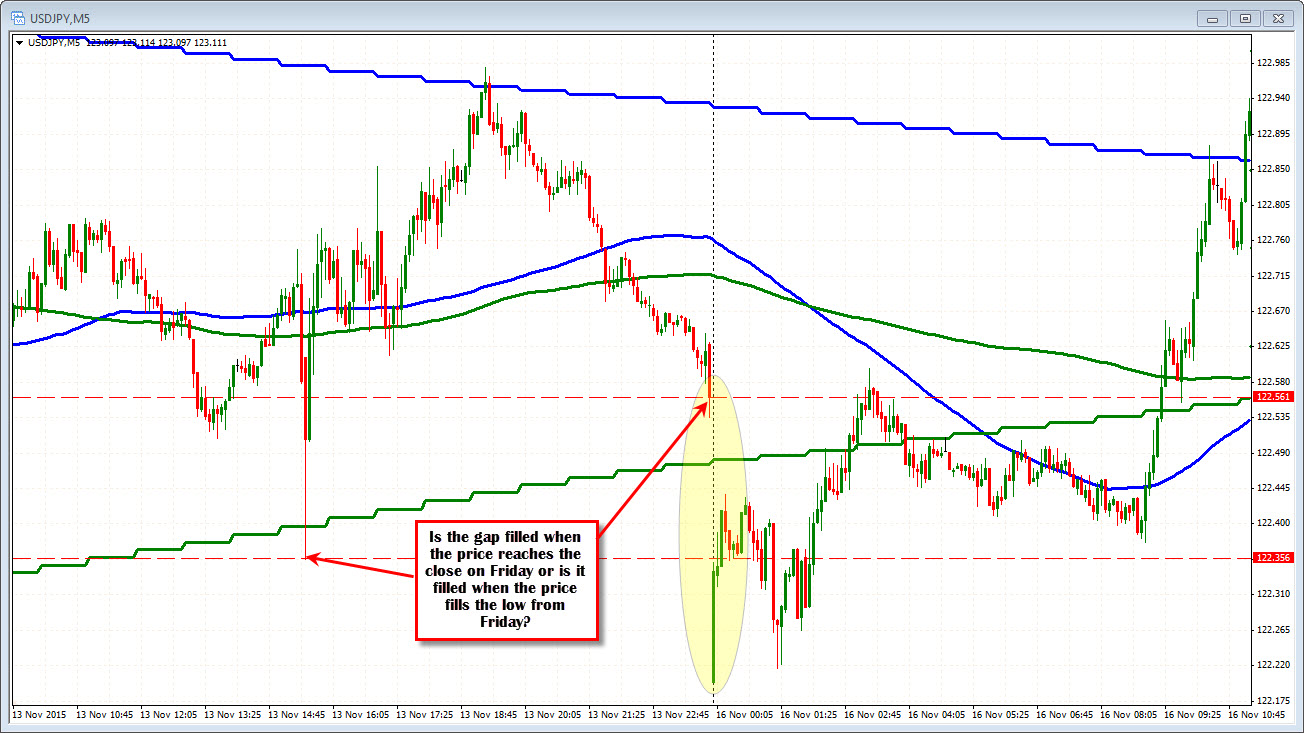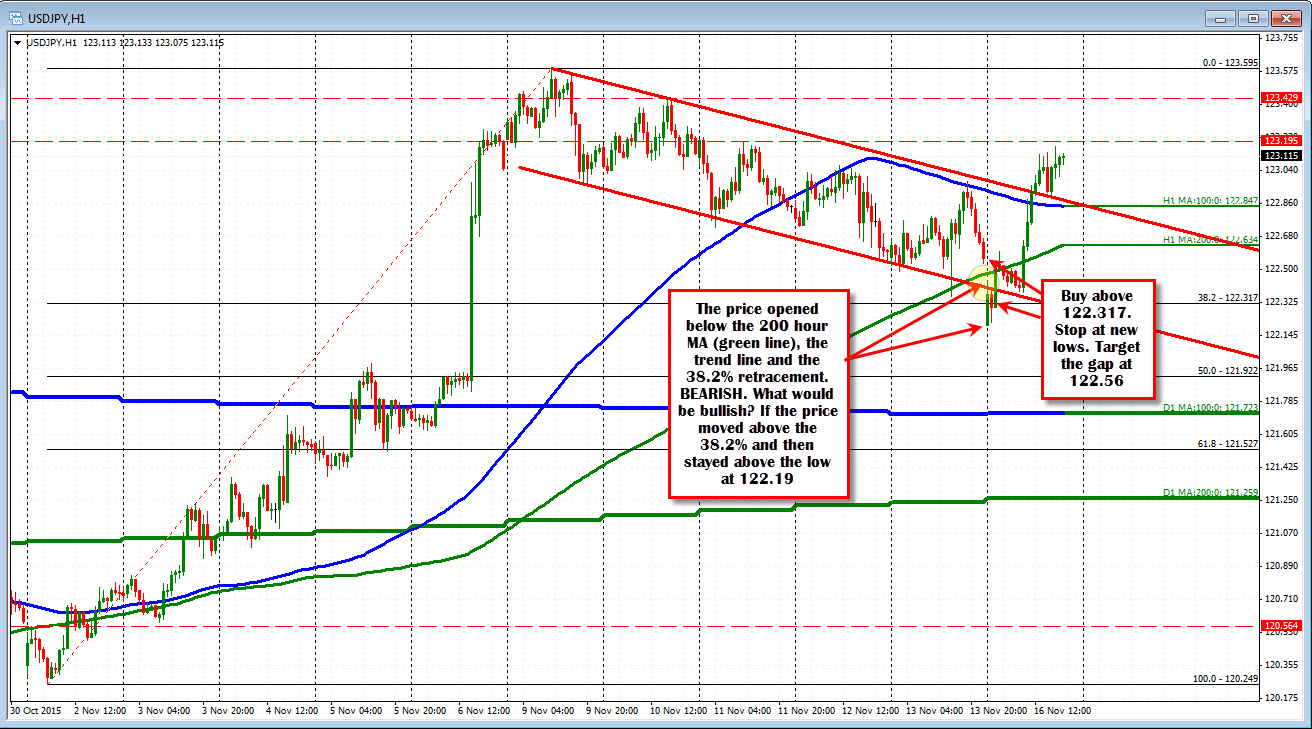All gaps get filled, right? Well, perhaps. How can you trade them without getting hurt?
There is one of those sayings in trading that goes like this: "All price gap gets filled".
Well, I am sure there are many traders who see a gap - in forex they tend to only happen over weekends - buy or sell in the direction opposite of the directional move, and ring the cash register by just waiting until the gap is filled.
Easy money, right?
Not so fast. There are times when a gap occurs and although it may EVENTUALLY get filled, it might be after an extended period.

For example, back on May 16 2003, the EURUSD closed at 1.1599. The low price on the following week only got to 1.1604. The price ultimately moved up to a high of 1.1938 or 339 pips from the gap area. Could you sit tight for a month and wait for that gap to be filled? How would you feel being down 339 pips at its peak?
Now, of course the gap was ultimately filled but not until June 19 - over a month after the gap was made. That is a long time to wait. I know I would have a tough time waiting that long and keeping my fear in check. I would have panicked at some point (the high? ; ) )

Another example: On June 26th the USDJPY gapped lower from a low of 123.21 and moved to a low of 121.93 before moving higher and filling the gap on the 3rd day after the gap (see chart above). Can you wait that long without getting scared. I would have a problem with it.

On September 5th the GBPUSD low price came in a 1.6273. The price gapped lower and reached a low of 1.6051 or 222 pips lower before rebounding and eventually filling the gap (see chart above). Can you wait through the 222 pip gap? Not me.
These are just some examples where there is some pain that traders must endure if they simply bought on a gap opening down or sold on a gap opening up and waited.
Now of course, there are other gaps that get filled soon after they occur. We remember those and unfortunately, those may come with that loud sucking sound that ultimately ends in a disastrous trade.
On November 16, 2015, the USDJPY gapped lower. The price closed at 122.56 on Friday, November 13. The open was 122.19. The low from Friday was 122.356.
One question to ask - given that scenario - "Is the gap filled at 122.356 (i.e. at the low from Friday) or at 122.56 (i.e. at the close from Friday)?". On a daily chart the gap would be filled at 122.356. On an hourly chart, that gap might not be filled until 122.56. I guess it depends on your perspective.

Let's say the gap is up at 122.56. Should traders simply buy at 122.20 and wait it out? For me, the answer to that is "No". Why? There is no reason to buy at that price.
Looking at the hourly chart, the technicals are saying bearish. Why? Because at the 122.20 opening price:

- The price is below the 200 hour MA at 122.48
- The price is below the lower trend line at 122.40, and
- The price is below the 38.2% at 122.317
All that is BEARISH.
For me, if I am looking for a gap to be filled to the upside, I need to have a reason - some reason - to be bullish. Having a reason gives you a reason to get out if you are wrong and the momentum continues. It also has the benefit of perhaps attracting others who see and are looking for the same thing. There is always safety in trading with the crowd. If the crowd sees the gap, sees something bullish, you may have "market support". That is a great thing to have.
So what would have been a bullish reason in the USDJPY technicals?
How about if the price moved back above the 38.2% at 122.317 (see hourly chart above)?
If that happens, the break below the 38.2% would be a failure. That is bullish news.
So I could buy at 122.32. I could also put a stop on a new low of 122.19 and limit my risk just in case the gap is a runaway gap that takes a number of days to fill. I do not want to increase fear and wait an uncertain amount of time (and pips!) waiting for the gap to be filled. I either want the gap to be filled quickly or I want out.
That is the key to my gap trading strategy.
In summary:
- Find a reason or reasons to trade against the gap direction.
- If right, exit when the gap is filled (or reevaluate the trade if you feel it has more room to go),.
- If wrong, GET OUT. The loss is limited and you don't waste time, emotional energy, potentially days of anxiety and fear which more times than not will end in tears. .
In my example, I will target a profit of 24 pips (122.32 to 122.56). I risk 14 pips (to 122.18 from 122.32).
Is that enough reward given the risk?
If not, don't do the trade. If enough, you have a trade, with limited risk, and see if that gap is indeed filled.
The gap was indeed filled before the stop. It did not have to be that way, but in this instance, it worked out well for the "buy the gap" crowd.




